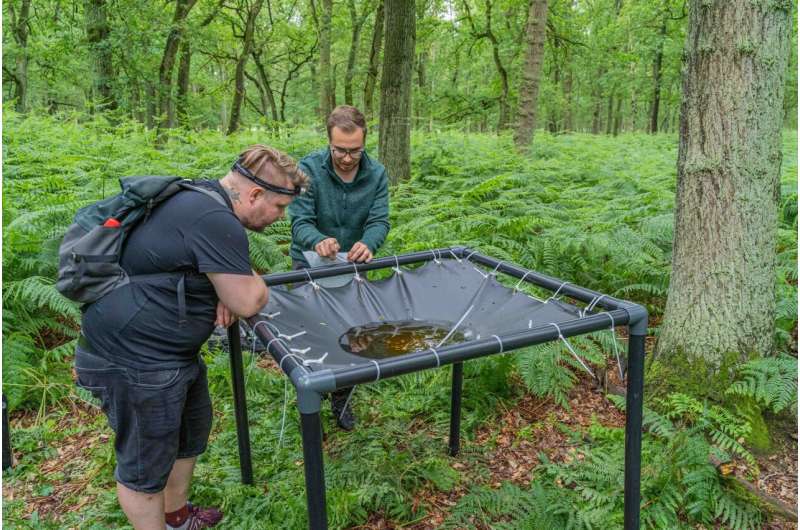Rainwash eDNA provides minimally invasive method to assess tree canopy invertebrate diversity

Tree-climbing, cranes, chemical knockdown—collecting samples from the canopies used to be very time-consuming. Scientists from the UDE's working group "Aquatic Ecosystem Research" led by Prof. Dr. Florian Leese now had a brilliant idea: Shortly before a forecast downpour, they placed four rain samplers beneath oaks, beeches, pines, and larches in the Diersfordter Wald and in the Großer Veen on the Lower Rhine region.
In addition to entire microorganisms and small invertebrates, the collected water also contained environmental DNA (eDNA): genetic information from organisms in the environment that was released through abrasion or excretion for instance.
This mixture of beetle, fungus, ant, and oak DNA—to name just a few—is subsequently analyzed by eDNA metabarcoding: The method captures even the smallest traces of genetic information, amplifies them, and enables the precise identification of each species present in the sample.
Leese's team focused on invertebrates. And by comparing the DNA analyses with the animals actually discovered in the rain samplers, they found that of the 50 species detected, only seven had fallen into the samples as whole specimens. "So, we conclude that our method actually provides a good overview of the biodiversity in tree canopies," explains first author Till Macher.
The biologists also found that species composition varied from tree to tree: overall, they were able to assign 88% of the species detected to a specific tree type.
Although the researchers worked with a small sample size for now, the results are convincing, Leese points out: "Our results show the potential of eDNA metabarcoding in rainwater as a rapid and minimally invasive method to measure the diversity of invertebrates living in tree canopies."
The paper is published in the journal Environmental DNA.
More information: Till‐Hendrik Macher et al, It's raining species: Rainwash eDNA metabarcoding as a minimally invasive method to assess tree canopy invertebrate diversity, Environmental DNA (2022).
Provided by Universität Duisburg-Essen

















